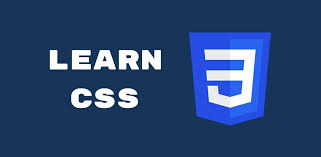Description
About the course
Professor Prem K. Kalra, a faculty from the Department of Computer Science and Engineering at the Indian Institute of Technology, Delhi has designed this course on “Introduction to Computer Graphics” which is a very basic course. This course will introduce you to the fundamentals of Computer Graphics. This is completely an online course which can be accessed from anywhere across the world. This course will cover the details of Graphics display devices, Input devices, Rendering pipeline, Raster graphics which includes Line and Circle drawing algorithms. Then it will cover windowing and clipping. After that, it covers Transformations, Curves and surfaces, Hidden surface elimination. Then the course covers Illumination and Shading Models, Introduction to Ray-tracing, Animation.
Learning Outcomes
After completing this course, you will be able to:
- Understand the fundamentals of Computer Graphics.
- Apply graphics programming techniques to design and create computer graphics scenes.
- Create effective OpenGL programs to solve graphics programming issues, including 3D transformation, objects modeling, color modeling, lighting, textures, and ray tracing.
- Boost your hireability through innovative and independent learning.
Target Audience
The course can be taken by:
Students: All computer science and engineering students.
Teachers/Faculties: All computer science and engineering teachers/faculties.
Professionals: Professionals: All working professionals, who wish to acquire new skills or improve their efficiency in the use of Computer Graphics.
Why learn Computer Graphics?
Computer graphics technology is used across a range of industries. Although this is not a rapidly growing field, it is continuously changing and requires technical training. 3D computer graphics has many applications in the entertainment industry, most importantly video games and visual effects in movie production. In medicine, computer graphics are used to visualize data obtained from medical imaging, such as CT scans. The computer-aided design relies on computer graphics for modeling and visualizing products, buildings, cars, etc. According to the U.S. Bureau of Labor Statistics (www.bls.gov), graphic designers earned an average annual wage of $51,640 as of May 2015. The middle 50% earned between $35,170 and $62,650. Those working for the federal government earned the highest salary, with wages averaging $78,200. Professionals in advertising earned an average of $52,440 a year, per the BLS in May 2015. The BLS predicted that employment for graphic designers from 2014-2024 would increase by 1%, which is slower than average. The Bureau also published 2015 statistics related to the field of multimedia artists and animators, reporting that the average annual salary earned by such individuals was $70,300. Animators working in computer systems design and for related services earned an average of $70,410 a year, per the same source, while those working in the motion picture industry earned more, averaging $73,270 a year.
Course Features
- 24X7 Access: You can view lectures as per your own convenience.
- Online lectures: 29 hours of online lectures with high-quality videos.
- Updated Quality content: Content is latest and gets updated regularly to meet the current industry demands.
Test & Evaluation
There will be a final test containing a set of multiple choice questions. Your evaluation will include the scores achieved in the final test.
Certification
This course is free and it has no certificate.
Topics to be covered
- Module - 1 Introduction
Look at computer graphics and the scope of applications is in all different disciplines, look at the basic elements,some examples of modeling for instance, certain applications which are specific to studying engineering,medical things, bio-graphics,Entertainment, look at rendering process,graphics in term as system.
- Course Outline and Reference book/study material description
- What is computer graphics, its scope and basic elements in it?
- What is the historical perspective of Computer Graphics and what are its applications?
- What is Graphics Rendering pipeline, Graphics system and Graphics output device?
- How to display the pixel in the frame buffer to CRT display?
- Module - 2 Raster Graphics
Look at list of devices which possibly can be used for input devices in Graphics system, looked at various line drawing algorithm.
- What is Graphics System and what are input devices?
- What is the DDA algorithm for drawing a Line and what is the problem associated with it?
- Which point to plot by doing an evaluation of a midpoint?
- What is the Midpoint Line Algorithm?
- Module - 3 Raster Graphics (Contd.)
Look at Midpoint circle algorithm for drawing circle,Ellipse drawing algorithm, look at clipping and Cohen and Sutherland algorithm for line clipping and its properties.
- Highlights of the last lecture.
- What is the Midpoint Circle Algorithm for Plotting a circle?
- What is the algorithm for drawing an Ellipse and what is Clipping?
- What is Cohen and Sutherland Clipping Algorithm and its properties?
- Module - 4 Clipping
Look at very popular clipping algorithm which is the Cyrus Beck Line Clipping Algorithm and its different aspects.
- Highlights of the last lecture.
- What is Cyrus beck line clipping algorithm(part-1)?
- What is Cyrus beck line clipping algorithm(part-2)?
- Can we do clipping for a non convex polygon or window using Cyrus beck line clipping algorithm?
- Can i extend the line algorithm to do polygon clipping?
- Module - 5 Polygon Clipping and Polygon Scan Conversion
Looking at Polygon clipping and the different kinds of polygons,look at extend the notion of clipping for the line to the polygon(Sutherland-Hodgman algorithm for polygon clipping), look at how we draw polygons.
- What are the different kinds of ploygons and polygon clipping process?
- What is Sutherland-Hodgman algorithm for polygon clipping?
- Example of Sutherland-Hodgman algorithm for polygon clipping
- Can we design an filling algorithm for a general or simple polygon or convex or non convex?
- Example of Polygon filling.
- Module - 6 Transformations
Look at Scaling,Rotation and translation transformations in 2D, and look at the homogeneous coordinates and its properties and characteristic, look at the composition of transformations,class of transformation.
- What is Scaling and Rotation transformation and how to generalize the use of maxtrix as a mechanism of performing transformation?
- How to perform translation and achieve matrix representation for any transformation?
- How to perform successive application of Transformation?
- Examples of Composition of transformation and warning for using these transformation.
- What are the different class of transformation and some highlights of transfromation of matrices in 3D?
- Module - 7 Transformations (Contd.)
look at Scaling,Rotation, Translation and Shear transformation in 3D,concatenation of different transformation,Composition of transformation in 3D, look at what we mean by a 3 dimensional image,perform 3D viewing using parallel projections.
- Highlights of 2D transformation and how to perform scaling and rotation transformation in 3D?
- How to perform translation and Shear transformation in 3D and what is Concatenation of Transformation?
- How to perform Composition of transformations in 3D?
- What is meant by 3D viewing?
- How to do 3D viewing using Parallel projections(Part-1)?
- Module - 8 3D Viewing
Highlights, explain Parallel projection types and Perspective projection that can be use in 3D viewing and also explain geneartion of perspective views.
- Highlights of previous lecture
- How to do 3D viewing using Parallel projections(Part-2)?
- 3D viewing using Prespective projections (Part-1)
- 3D viewing using Prespective projections (Part-2)
- How to generate Prespective views?
- Module - 9 3D Viewing (Contd.)
Overview of all Transformation with respect to viewing transformation,Implementation of View coordinate system,also explain Volume Normalization Transformation.
- Highlights of previous lecture and Overview of Transformations.
- What is the implementation issue of 3D viewing and how to define View Coordinate system?
- How to define a mechanism by which we can make a transfromation from one system to other system(Part-1)?
- How to define a mechanism by which we can make a transfromation from one system to other system(Part-2)?
- How to normalize volume?
- Module - 10 Curves
We will look at the design of curves,we look at some of the higher degree of approximation to design curves we can look at various representations of curves.Explain Parametric curves.
- What is the design of curve and what are the various representations of curves?
- What is Parametric Curve?
- What is Cubic splines and how to obtain cubic splines(Part-1)?
- How to obtain cubic splines(Part-2)?
- How to obtain cubic splines(Part-3)?
- Module - 11 Assignment 1
Look at various steps that can be consider in assignment and outcome of the assignment.
- What are the various component of assignment?
- Module - 12 Curves
Look at some points about parametric curve and explain example of how to obtain spline (Highlights),also look at various Berntein polynomials properties of Bezier curve and an Alorithm for constructing Bezier curve, bernstein polynomials to construct bezier curves.
- Highlights previous lecture
- What are Bezier curves and Bernstein polynomials and example of Cubic curves?
- What are the Bernstein polynomials Properties of Bezier curve(Part1)?
- What are the Bernstein polynomials Properties of Bezier curve(Part-2)?
- What is the de Casteljau Algorithm for constructing Bezier curves?
- Module - 13 Curves (Contd.)
look at most of the properties which we looked at in the case of Bernstein polynomial formulation can also be observed and asserted using de Casteljau algorithm, Explain Continuity between adjacent bezier curves,Degree elevation, subdivision properties of Bezier curve.
- Highlights of the previous lecture
- What is the de Casteljau Algorithm and how Bernstein polynomial properties are revealed when we have Cateljau algorithm contruction?
- What are the general properties or features of Bezier curve (Part-1)?
- What are the general properties or features of Bezier curve (Part-2)?
- What are the general properties or features of Bezier curve (Part-3)?
- Module - 14 Curves (Contd.)
look at limitations in Bezier curves,what B Splines offer to overcome these limitation,how to define B-spline,Various ways in which we can consider knot vector in contruction of B-spline.
- What are the limitations of Bezier curve, what makes the B-Splines different from the Bezier curves and how to define B slines?
- What are the properties of B-Splines and how the basis function is evaluated ?
- What is the role of knot value or knot vector in contruction of B-spline(Part-1)?
- What is the role of knot value or knot vector in contruction of B-spline(Part-2)?
- Module - 15 Curves (Contd.)
- Recap of some aspects of B-spline.
- Module - 16 Surfaces
Surfaces are basically nothing but some sort of a boundary representation of a 3D object. We are going to look at the various methods on generating these surfaces.
- What are surfaces and its various representations?
- How to construct surfaces using revolution and its example?
- How to construct surfaces using Sweep surfaces and its example?
- How to define Surfaces using Bi linear interpolation with different problems?
- What is Coon's patch?
- Module - 17 Surface (Contd.)
Look at some of the surfaces which are more like extensions of the curves,Then how we generate surfaces extending those ideas which we used for curves? properties of Bezier surafce,degre elevation and Derivatives of Bezier surface.
- How to construct Bezier surface(Part-1)?
- What are the properties of Bezier Surface and how to do Degree elevation in it?
- How to do Degree Elevation in Bezier surface?
- Module - 18 Surfaces (Contd.)
Looking at derivative terms,look at how polygonal representations could be done for the purpose of converting surfaces or even acquiring the models in terms of polygons.
- Highlights of the previous lecture
- What are the additional derivatives of Bezier surface and what are interpolating cubic splines and can we extend the idea of it to construct surface?
- What is the motivation behind derivatives and example of Bezeir surface and the patches?
- How to construct B-spline surface and its example?
- How Polygonal representations could be done?
- Module - 19 Surfaces (Contd.)
Look at the models which can get formed using the combination of surfaces and we are building these model which could possibly be the solids,Notion of Hierarchical modeling.
- Highlights previous lecture
- What is Wireframe representation and what is the problem with it?
- What is the Boundary Representation of Solid models and its examples?
- Example of Polyhedra where we will be able to have boundary representations
- What is Constructive Solid Geometry and its example?
- What is the notion of Hierarchical modeling?
- Module - 20 Hierarchical Models
Look at the hierarchical models,modeling transformations and its application in Space transfer,space transfer from one coordinate system to another coordinate system,looking at building complex scenes,Assignment for student.
- What are Hierarchical Models and what is Modeling pipeline?
- What is Modeling Transformation, its applications and examples and what scene and hierarchical modeling does for building a scene?
- Assignment on building a model of a car(guidelines)
- Module - 21 Rendering
We are going to look at Ambient, Diffuse,Specular compenents and look at the computational aspects of these components and then define an illumination model.looking at various kinds of light sources.
- How to define Illumination model(Part-1)?
- How to define Illumination model(Part-2)?
- How to define Illumination model(Part-3)?
- What are the Computational aspects of Illumination model?
- What various kind of light sources are there?
- Module - 22 Rendering (Contd.)
We are going to look at shading for polygonal surfaces and approaches to do shading,problem with polygon shading.
- What is Shading and what are the different approches for shading polygon?
- How to do Flat shading with example and its features?
- How to do Gouraud Shading with example and its limitation?
- How to do Phong shading with example?
- What are the inherent problems of using interpolation.?
- Module - 23 Rendering (Contd.)
Look at the simple model of transparency,some of the issues which are more like implementation issue concerning what happens in the OpenGL,look at the Ray tracing is a method which combines issue for rendering,what ray tracing does.
- Highlights.
- What is Transparency Model and what are the some issues which are more like implementation issue concerning what happens in the OpenGL.
- What are the different Issue for Rendering method?, what forwarding Ray tracing does?
- Why we call backward ray tracing?, what Backward Ray tracing does?
- What is the Ray Object Intersection issue related to Ray tracing and how to take care of(Part-1)?
- Module - 24 Ray Tracing
Look at Ray sphere,plane,quadric,box Intersection issue and how to handle it.
- Highlights of the previous lecture.
- What is the Ray Object Intersection issue related to Ray tracing and how to take care of it(Part-2)?
- What is the Ray Object Intersection issue related to Ray tracing and how to take care of it(Part-3)/
- What is the Ray Object Intersection issue related to Ray tracing and how to take care of it(Part-4)?
- What is the Ray Object Intersection issue related to Ray tracing and how to take care of it(Part-5)?
- Module - 25 Ray Tracing (Contd.)
Look at issues of transformation from one system to another system and how do we incorporate that with respect to ray tracing,an interesting issue.
- How to incorporate issues of transformation from one system to another system with respect to ray tracing(Part-1)?
- How to incorporate issues of transformation from one system to another system with respect to ray tracing(Part-2)?
- What is the issue of transforming object and how to find intersection point of transforming objects?
- Can we obtain a transformation which would necessarily be applied to the normal without recomputation of the normal of the transformed object?
- Module - 26 Ray Tracing (Contd.)
Look at Issues of ray tracing beyond one level,Other features which are of concern to ray tracing.
- Highlights of the previous lecture
- What is Recursive Ray tracing and what are the respective rays in recursive ray tracing?
- Example of Recursive tracing and when to stop Recursive ray tracing?
- What are some issues in term of computing intensity and what is the notion of global illumination and its examples?
- What are the other features which are of concern to ray tracing?
- Module - 27 Assignment: Ray Tracing
Look at assignment that is basically going to be on ray tracing,perform ray tracing for Compound objects, texture mapping is the application of patterns or images to three-dimensional graphics to enhance the realism of their surfaces.
- Assignment on Ray Tracing
- How to do ray tracing fo compound objects?
- What is Texture mapping and how to perform it?
- Example of Texture Mapping and what are some other issues in the context of ray tracing?
- Module - 28 Hidden Surface Elimination
We are going to look at about hidden surface elimination and the various methods or ways in which we perform this hidden surface elimination.
- What is Hidden surface elimination and its example and approach for it?
- What is Floating Horizon Algorithm of hidden surface elimination?
- What is Back Face Culling method of hidden surface elimination?
- What is Z-Buffer Algorithm of hidden surface elimination(Part-1)?
- What is Z-Buffer Algorithm of hidden surface elimination(Part-2)?
- Can we use z-buffer in finding out shadows?
- Module - 29 Hidden Surface Elimination (Contd.)
We are going to look at Painter's and Area subdivision algorithm, Binary space partitioning method of hidden surface elimination.
- What is Painter's Algorithm of hidden surface elimination(Part-1)?
- What is Painter's Algorithm of hidden surface elimination(Part-2)?
- What is Binary Space Partitioning (BSP) and how does it help in the context of hidden surface elimination?
- Example of Binary space partitioning
- What is the Area Subdivision Algorithm of hidden surface elimination?
- Example of Area subdivision algorithm
- Module - 30 Hidden Surface Elimination(Contd.)
Look at another approach which is also of the kind in area subdivision,method of hidden surface elimination which is actually a combination of z buffer and scan line conversion of polygons that is Scan line algorithm.
- What is Weiler atherton algorithm of hidden surface elimination(Part-1)?
- What is Weiler atherton algorithm of hidden surface elimination(Part-2)?
- What is Scan Line Algorithm of hidden surface elimination(Part-1)?
- What is Scan Line Algorithm of hidden surface elimination(Part-2)?
- What is Scan Line Algorithm of hidden surface elimination(Part-3)?
- Module - 31 Fractals
Looking at fractals and how these fractals can be used for modeling natural phenomena.
- What are Fractals and what is the basic principle of generation of fractals and its examples?
- What is Fractal Dimension and what are Geometric fractals and its examples?
- How dimension value effect the fractal curve?
- What are some of the applications of Geometrical fractals(Part-1)?
- What are some of the applications of Geometrical fractals(Part-2)?
- Module - 32 Fractals (Contd.)
Looking at the various ways of process of subdivision which in turn gives you a generating approach,algebraic fractals.
- Recapitulation of Properties and Details related to Fractals
- How to overcome problem with nature of generation of fractals and what is Midpoint subdivision method for generating Random fractals?
- What is Triangle Edge Subdivision method and the issue with it?
- What is Diamond Square subdivision and Square square subdivision and what are its applications?
- What is Mandelbort' function, how it iterate and how to generalize the formulation of Mendelbrot's function?
- Module - 33 Computer Animation
Look at important aspect which is also very important in computer graphics known as animation. and diiferent techniques of doing animation.
- What is Animation, what happens in conventional animation and what is its process and aspects?
- How to address animation aspect in computer and what are the characteristics of animation?
- What is Rotoscopy and what are the Key framing techniques for Computer animation?
- What are Parametric and Algorithmic techniques for computer animation and its examples to illustrate some of the techniques?
- Module - 34 Animation (Contd.)
Looking at was the usage of splines in the context of animation, talking about image morphing,several methods for performing image morphing.
- What are the applications where splines can be used for the purpose of animation(Part-1)?
- What are the applications where splines can be used for the purpose of animation(Part-2)?
- What is Morphing?
- What is Image Morphing?
- What is the Triangle method for performing image morphing?
- What is the image morphing application?
- Module - 35 Animation (Contd.)
Look at another way of doing animation i.e. Particle systems.
- Highlights of the previous lecture.
- What is the feature line based method for performing image morphing?
- What are Particle systems and what is the process of particle systems for animation?
- Animation Examples of Particle systems
- Example of where particle systems are used.
- Introduction to Computer Graphics - Final Quiz
Note : Parts of this material has been sourced from NPTEL, adapted and modified to adhere to our Pedagogical requirements and uploaded to YouTube for reuse under the same license.





Reviews
There are no reviews yet.